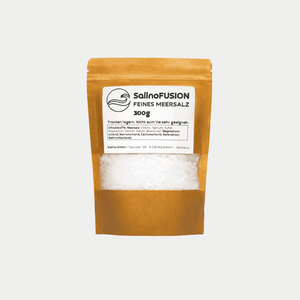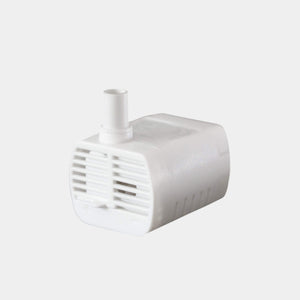In an age where medications for every ailment are readily available, the valuable knowledge of effective home remedies is increasingly being forgotten. Yet nature offers us a rich arsenal of healing powers that often work more gently and have fewer side effects than their pharmaceutical counterparts. Passed down from our grandparents, confirmed by experience, and now partly scientifically substantiated – traditional home remedies are rightly experiencing a renaissance in our health consciousness.
Who hasn't experienced it? The first signs of a cold are starting to appear, a persistent headache is throbbing, or your skin is in desperate need of care. Before you reach for the next pill or buy expensive specialty products, it's worth taking a look in your own kitchen or garden. There you'll often find ingredients that, when used correctly, can have amazing healing effects.
In this comprehensive article, we present 12 tried-and-true home remedies that really work – from relieving cold symptoms to natural pain relief and effective skin care. Discover the power of traditional healing methods and learn how to use them easily and effectively in your daily life.
Proven home remedies for cold symptoms
- Honey-onion syrup: The natural cough suppressant

If a cough keeps you awake at night and torments you during the day, a tried-and-tested home remedy can provide quick relief: honey and onion syrup. The combination of the antibacterial properties of honey with the anti-inflammatory and expectorant properties of onions makes this syrup a true all-rounder for respiratory illnesses.
How to make the syrup:
- Cut a medium-sized onion into fine rings
- Place the rings in a bowl and cover them with about 3-4 tablespoons of natural honey
- Let the mixture steep for at least 3 hours or overnight
- Then strain the liquid
Take one teaspoon of the syrup as needed. Honey should be avoided in children under one year of age due to the risk of botulism.
Studies have shown that honey is at least as effective for coughs as over-the-counter cough medicines. The essential oils and sulfur compounds contained in onions also have expectorant and bacterial-fighting properties. A perfect combination of taste and effectiveness!
2. Salt water inhalation : relieves blocked noses
A blocked nose can significantly impair everyday life and disrupt sleep. Instead of resorting to decongestant nasal sprays, which can dry out mucous membranes if used for extended periods, opt for a proven alternative: saline inhalation.
The advantages of this method:
- Naturally moisturizes the respiratory tract
- Loosens stuck mucus
- Promotes the natural cleansing function of the mucous membranes
- No risk of addiction like with some nasal sprays
Application:
- Heat about half a liter of water
- Add a teaspoon of sea salt or Himalayan salt
- Keep your distance from the steam (be careful of scalding!)
- Cover your head and bowl with a towel
- Breathe in the steam calmly for 5-10 minutes
Scientific studies confirm that saltwater inhalation can significantly relieve the symptoms of colds and sinusitis. The warm steam combined with the salt loosens mucus, reduces inflammation, and thus makes breathing easier.
3. Ginger tea with lemon and honey: The immune trio

When the first signs of a cold appear, a freshly brewed ginger tea with lemon and honey can work wonders. This powerful combination combines several health-promoting properties:
- Ginger contains gingerols and shogaols, which have anti-inflammatory effects and strengthen the immune system
- Lemon provides vitamin C and helps the body fight infections
- Honey soothes irritated mucous membranes and has an antibacterial effect
Recipe for an effective immune tea:
- Simmer 3-5 thin slices of fresh ginger in 500 ml of water for 10 minutes
- Add the juice of half a lemon
- Stir in 1-2 teaspoons of honey to taste (at room temperature to preserve the active ingredients)
Drink this tea several times a day, especially at the onset of a cold. The warming effect of ginger also improves circulation and helps the body eliminate toxins more quickly.
Natural pain relief from the home medicine cabinet
4. Arnica ointment: The classic for bruises and hematomas

Arnica is one of the best-known medicinal plants for blunt injuries such as bruises, strains, or hematomas. The yellow-flowering mountain plant contains anti-inflammatory and circulation-promoting substances that can relieve pain and reduce swelling.
Useful information about the application:
- Apply a thin layer of arnica ointment to the affected area, but never to open wounds!
- Apply 2-3 times daily until symptoms subside
- If you have sensitive skin, test with a small amount as allergies are possible
However, the scientific evidence on arnica is mixed. While some studies show positive effects on bruises and osteoarthritis, the evidence is limited overall. The European Medicines Agency (EMA) classifies arnica as a traditional remedy for blunt injuries, whose effectiveness is based on many years of experience but not yet sufficiently proven by clinical studies.
If you don't have ready-made arnica ointment on hand, you can also use curd cheese. Its cooling effect also relieves swelling and pain.
5. Hot water bottle and cherry stone pillow: relaxation for tense muscles

Tension in the neck and shoulder area is one of the most common complaints in our modern office environment. Instead of immediately reaching for painkillers, rely on the soothing power of warmth. Hot water bottles and cherry stone pillows have been proven effective for muscle tension and back pain for generations.
The mechanisms of action:
- Heat promotes blood circulation in the tissue
- Tense muscles can relax
- The metabolism in the affected regions is stimulated
- The nerve conduction velocity for pain stimuli is reduced
The use of warm, moist compresses or cherry stone pillows is particularly effective, as they retain heat longer and release it more evenly. The cherry stone pillow also adapts perfectly to the body shape and can be reused as often as needed.
Studies show that heat treatments for chronic back pain can be as effective as painkillers – with no side effects for the organism.
6. Peppermint oil: The natural headache remedy

For mild to moderate headaches, and especially tension headaches, peppermint oil can be an effective alternative to painkillers. Scientific studies have shown that a 10 percent peppermint oil solution can be as effective in treating tension headaches as 1,000 mg of paracetamol or acetylsalicylic acid (aspirin). The German Society for Pain Medicine even lists peppermint oil as the first-line treatment for acute tension headaches.
Application tips:
- Gently massage 1-2 drops of diluted peppermint oil onto temples, forehead and neck
- Do not use near the eyes and wash hands thoroughly afterwards
- For sensitive skin, dilute with a carrier oil (e.g. almond or jojoba oil)
- Caution for asthmatics and small children, as menthol can cause breathing problems
- For self-treatment, a 10% peppermint oil solution in ethanolic solution is usually used
Clinical studies have shown that a 10 percent peppermint oil solution can be as effective as 1000 mg of aspirin in treating tension headaches. The essential oil acts directly on pain receptors and can significantly reduce pain intensity within 15 minutes.
Natural beauty care from the kitchen
7. Honey face mask: moisture and shine for the skin

The nourishing properties of honey have been known since ancient times. As a natural moisturizer, antibacterial agent, and gentle exfoliator, honey is a true all-rounder for skin care. Its enzyme-rich composition makes it an ideal home remedy for radiant, healthy skin.
Simple honey face mask:
- Gently warm 1-2 teaspoons of natural, liquid honey
- Apply evenly to cleansed facial skin (avoiding the eye area)
- Leave on for 15-20 minutes
- Rinse with lukewarm water
The antibacterial properties of honey make this mask particularly beneficial for people with blemish-prone skin. At the same time, honey provides intensive moisture and leaves a healthy glow.
For dry skin, you can add half a teaspoon of olive oil or yogurt to the honey; for oily skin, a pinch of cinnamon or a few drops of lemon juice will have a balancing effect.
8. Hair treatment with avocado and olive oil: intensive care for damaged hair
Damaged, dry hair requires regular, intensive care. Instead of resorting to expensive specialty products, you can make a highly effective hair treatment yourself using two ingredients from your kitchen:
Recipe for a rich hair treatment:
- Mash the flesh of a ripe avocado
- Add 2 tablespoons of high-quality olive oil and mix to a creamy consistency
- Massage the mixture evenly into towel-dried hair
- Leave on for 30-45 minutes, cover with a cap if necessary
- Rinse thoroughly and shampoo as usual
The fats, vitamins, and minerals contained in avocados penetrate deep into the hair structure and repair damaged areas. Olive oil seals the cuticle and adds shine and softness to the hair.
For an extra boost, you can stir a teaspoon of honey into the mixture, which will moisturize your hair and add extra shine.
9. Coffee grounds scrub: Natural anti-cellulite remedy

Turn your morning coffee into a valuable beauty ritual! Coffee grounds, which usually end up in the trash, are an excellent natural exfoliator with additional anti-cellulite benefits.
The benefits of coffee grounds for the skin:
- The slightly abrasive texture gently removes dead skin cells
- The caffeine it contains promotes blood circulation
- Microcirculation is stimulated, which can counteract cellulite
- Antioxidants protect the skin from free radicals
DIY coffee grounds scrub:
- Mix 3 tablespoons of dried coffee grounds with 1 tablespoon of olive oil or coconut oil
- Optionally add a few drops of essential oil for a pleasant fragrance
- Apply to damp skin in circular motions
- Massage gently for 3-5 minutes
- Rinse with warm water
Used regularly, this natural exfoliator can contribute to smoother, firmer skin. However, for sensitive skin areas like the face, a more delicate scrub, such as ground oatmeal, is more suitable.
Traditional home remedies for digestive problems
10. Fennel tea: The digestive aid with a long tradition

Bloating, a feeling of fullness, and mild stomach cramps – especially after large meals, digestive problems are not uncommon. Before resorting to medication, consider the beneficial effects of fennel tea.
Fennel seeds contain essential oils with antispasmodic and carminative properties. They promote the production of digestive enzymes, thus naturally relieving gastrointestinal discomfort.
Preparation of an effective fennel tea:
- Lightly crush 1-2 teaspoons of fennel seeds in a mortar to release the essential oils
- Pour over 250 ml of boiling water
- Cover and let stand for 10 minutes
- Strain and drink slowly
Fennel tea has proven to be a gentle yet effective home remedy, especially for infants and young children with flatulence. Fennel tea is also recommended for breastfeeding mothers, as it can promote milk production.
Several clinical studies confirm the digestive and antispasmodic effects of fennel, which are due to the substances anethole and fenchone it contains.
11. Apple cider vinegar in water: The all-purpose remedy for healthy digestion

Apple cider vinegar is a truly versatile home remedy and has been used for centuries to support digestion. It can help regulate stomach pH, activate digestive enzymes, and stabilize blood sugar levels.
Benefits of apple cider vinegar for digestion:
- Supports the production of stomach acid when production is too low
- Promotes the growth of healthy intestinal bacteria
- Can reduce cravings
- Helps break down fats and proteins
Recommended application:
- Dilute 1-2 teaspoons of cloudy organic apple cider vinegar in a glass of water (250 ml)
- Optionally sweeten with some honey
- Drink 15-30 minutes before a meal
Important: Undiluted apple cider vinegar can attack teeth and irritate mucous membranes. Therefore, always use a straw and rinse your mouth with clean water after drinking.
Scientific studies suggest that apple cider vinegar not only supports digestion but can also have positive effects on blood sugar and cholesterol levels.
12. Psyllium husks: Natural fiber booster
Constipation is a common problem that can significantly impair quality of life. Instead of immediately resorting to laxatives, which can cause long-term bowel sluggishness, many people rely on the gentle effects of psyllium husk.
The husks of Indian psyllium (Plantago ovata) are among the most effective natural fibers. They contain mainly soluble fiber, which swells upon contact with liquid and forms a gel-like volume. This property leads to an increase in stool volume, which stimulates intestinal peristalsis and facilitates bowel movements.
Scientifically proven: Studies show that just 10 grams of psyllium husk daily for three weeks can almost double stool weight. Also noteworthy is its regulating effect – psyllium husk can help with both constipation and diarrhea, as it binds excess water in the intestines and can thus solidify stools.
Recommended use:
- Stir 1-2 teaspoons of psyllium husks into a large glass of water or juice
- Drink immediately before the mixture thickens too much
- Afterwards, be sure to drink another glass of water (at least 200 ml)
- Use morning and evening for optimal results
- Increase your daily fluid intake to at least 2 liters
Important: Never take psyllium husk before bedtime or while lying down. Leave at least one hour between taking medication, as the fiber can impair absorption. Drinking too little fluid can lead to constipation and even intestinal obstruction instead of the desired effect.
Psyllium husks are characterized by their particularly gentle effect. Unlike many other laxatives, they do not lead to habituation or weaken the intestinal muscles. Instead, they naturally regulate bowel movements.
Beyond intestinal health, various studies have shown that psyllium husk can also have positive effects on metabolism. It can help stabilize blood sugar levels by slowing the absorption of carbohydrates. Positive effects on elevated cholesterol levels have also been demonstrated. Regular consumption of psyllium husk could therefore be particularly beneficial for people with type 2 diabetes or metabolic syndrome.
Note: For children under six years of age, pregnant women and breastfeeding women, the use of psyllium husks should be discussed with a doctor, as scientific evidence for these groups is insufficient.
How to use home remedies optimally
The power of natural remedies is best realized when you follow a few basic principles:
Quality first: Use high-quality, natural ingredients whenever possible. Organic honey, cold-pressed olive oil, or untreated medicinal herbs make a noticeable difference in effectiveness.
Early application: Start using home remedies as soon as the first signs of illness appear. The sooner you react, the more effectively the natural remedies can intervene.
Patience and consistency: Natural healing methods often work more slowly than pharmaceutical preparations, but are more sustainable and have fewer side effects. Give your body the time it needs to heal.
Listen to your body: Everyone reacts differently to home remedies. Observe closely how your body reacts to different treatments and adjust your dosage accordingly.
When to see a doctor?
As valuable as home remedies may be, they have their limitations. You should definitely seek medical advice in the following situations:
- If symptoms persist for more than a week or worsen
- If you have a high fever above 39°C
- For severe, persistent pain
- If you have shortness of breath or chest pain
- If you experience unusual or worrying symptoms
- In the case of chronic diseases such as diabetes, cardiovascular diseases or asthma
Home remedies are ideally a supplement to conventional medical treatment, not a substitute for medical care in the case of serious illnesses.
The power of salt air: An underestimated home remedy
Another powerful home remedy that has recently gained increasing attention is the use of salt air. It has been known for centuries that spending time on the seashore or in salt caves can have positive effects on the respiratory system and skin.
The tiny salt particles in the air can penetrate the respiratory tract, help moisten the mucous membranes, and thus support the self-cleaning of the bronchi. People with respiratory diseases such as bronchitis or frequent colds, in particular, report improvements after regular exposure to salty air.
Since not everyone can regularly travel to the seaside or visit a salt cave, there are now ways to bring this beneficial effect home. Compact mini-salt baths create a saline atmosphere that moistens the respiratory tract. This form of passive application is particularly pleasant because it can be easily integrated into everyday life – whether while reading, watching television, or sleeping.
This form of passive application is particularly pleasant because it can be easily integrated into everyday life – whether while reading, watching TV, or sleeping. The salt air has a gentle and continuous effect without the need for active inhalation.
Conclusion: Back to proven knowledge
At a time when we're increasingly looking for natural alternatives to chemical products, traditional home remedies are experiencing a well-deserved renaissance. They combine effectiveness with environmental friendliness and are often more cost-effective than commercial preparations.
The 12 home remedies presented here are just a small sample of the rich treasure trove of traditional healing knowledge. What they all have in common is that they are based on natural ingredients that are readily available and versatile. From treating colds to pain relief to beauty care – nature provides effective solutions for many ailments.
Take the time to integrate these proven methods into your daily routine and give them a chance to work. Often, it's the combination of traditional knowledge and modern understanding of the mechanisms of action that determines the true value of these home remedies.
And if you'd like to experience the beneficial effects of salt air at home, a compact mini-salt bath like the one from SalinoVatis could be a useful addition to your natural medicine cabinet. With minimal effort and electricity consumption, you can bring a touch of the ocean climate into your home – for clear airways and increased well-being in a natural way.



